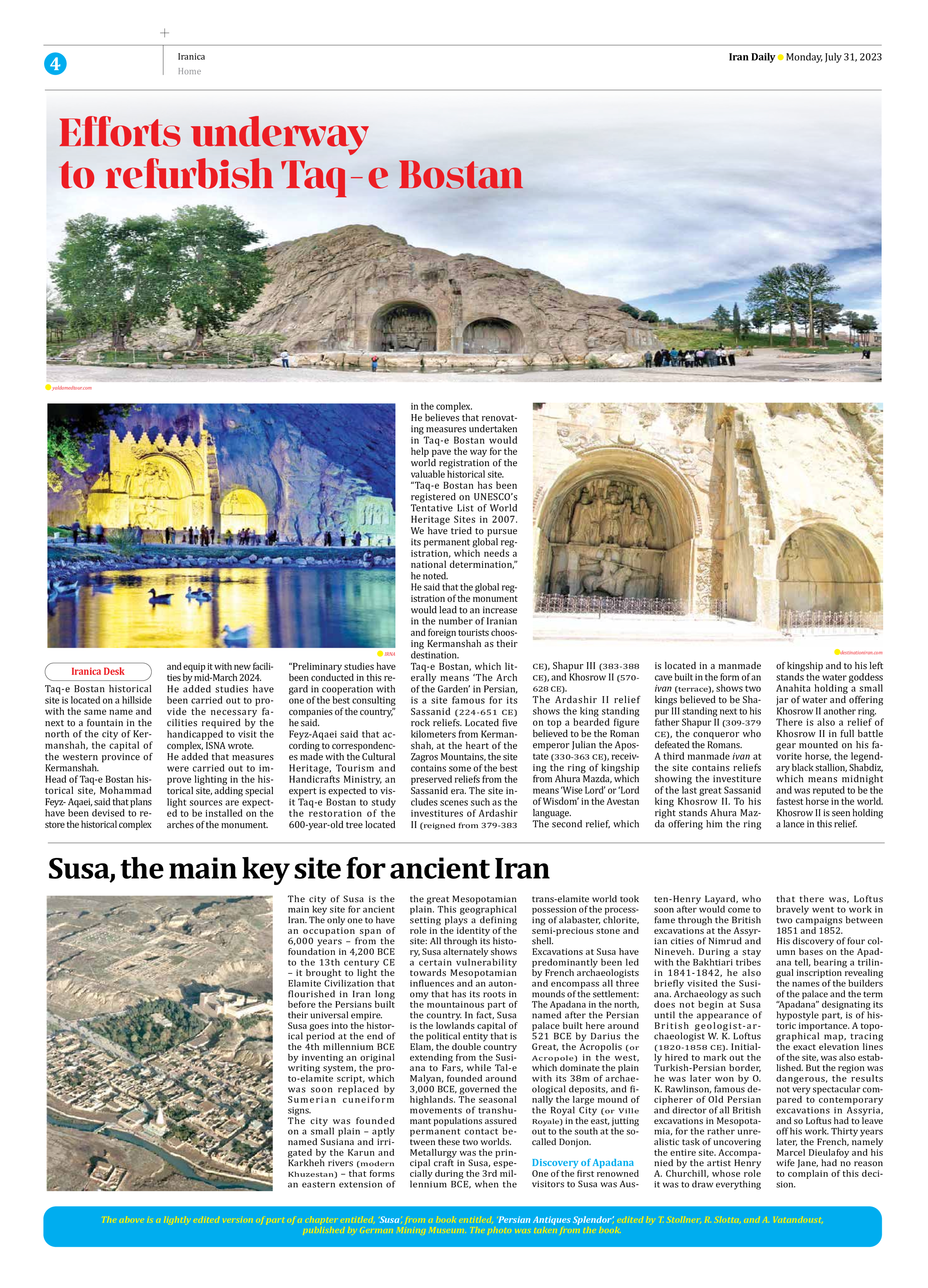
Susa, the main key site for ancient Iran
The city of Susa is the main key site for ancient Iran. The only one to have an occupation span of 6,000 years – from the foundation in 4,200 BCE to the 13th century CE – it brought to light the Elamite Civilization that flourished in Iran long before the Persians built their universal empire.
Susa goes into the historical period at the end of the 4th millennium BCE by inventing an original writing system, the proto-elamite script, which was soon replaced by Sumerian cuneiform signs.
The city was founded on a small plain – aptly named Susiana and irrigated by the Karun and Karkheh rivers (modern Khuzestan) – that forms an eastern extension of the great Mesopotamian plain. This geographical setting plays a defining role in the identity of the site: All through its history, Susa alternately shows a certain vulnerability towards Mesopotamian influences and an autonomy that has its roots in the mountainous part of the country. In fact, Susa is the lowlands capital of the political entity that is Elam, the double country extending from the Susiana to Fars, while Tal-e Malyan, founded around 3,000 BCE, governed the highlands. The seasonal movements of transhumant populations assured permanent contact between these two worlds.
Metallurgy was the principal craft in Susa, especially during the 3rd millennium BCE, when the trans-elamite world took possession of the processing of alabaster, chlorite, semi-precious stone and shell.
Excavations at Susa have predominantly been led by French archaeologists and encompass all three mounds of the settlement: The Apadana in the north, named after the Persian palace built here around 521 BCE by Darius the Great, the Acropolis (or Acropole) in the west, which dominate the plain with its 38m of archaeological deposits, and finally the large mound of the Royal City (or Ville Royale) in the east, jutting out to the south at the so-called Donjon.
Discovery of Apadana
One of the first renowned visitors to Susa was Austen-Henry Layard, who soon after would come to fame through the British excavations at the Assyrian cities of Nimrud and Nineveh. During a stay with the Bakhtiari tribes in 1841-1842, he also briefly visited the Susiana. Archaeology as such does not begin at Susa until the appearance of British geologist-archaeologist W. K. Loftus (1820-1858 CE). Initially hired to mark out the Turkish-Persian border, he was later won by O. K. Rawlinson, famous decipherer of Old Persian and director of all British excavations in Mesopotamia, for the rather unrealistic task of uncovering the entire site. Accompanied by the artist Henry A. Churchill, whose role it was to draw everything that there was, Loftus bravely went to work in two campaigns between 1851 and 1852.
His discovery of four column bases on the Apadana tell, bearing a trilingual inscription revealing the names of the builders of the palace and the term “Apadana” designating its hypostyle part, is of historic importance. A topographical map, tracing the exact elevation lines of the site, was also established. But the region was dangerous, the results not very spectacular compared to contemporary excavations in Assyria, and so Loftus had to leave off his work. Thirty years later, the French, namely Marcel Dieulafoy and his wife Jane, had no reason to complain of this decision.
The above is a lightly edited version of part of a chapter entitled, ‘Susa’, from a book entitled, ‘Persian Antiques Splendor’, edited by T. Stollner, R. Slotta, and A. Vatandoust,
published by German Mining Museum. The photo was taken from the book.







